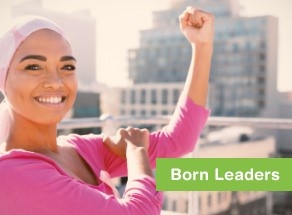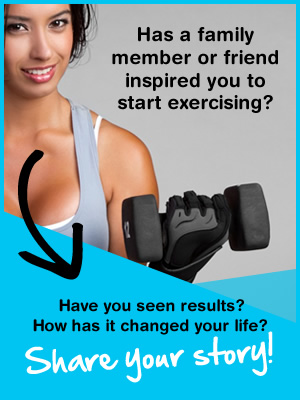
Hispanic Running Clubs Are Out to Even the Odds
10/23/2015 12:00PM | 7425 viewsGetting more women (and men) into the sport can improve troubling health statistics.
by Jon Marcus
Elaine Gonzalez Johnson’s reason for starting to run was not particularly unusual. While pregnant with her daughter in 2012, she had gained more than 50 pounds and was having trouble getting rid of the weight.
“I was just in a bad place,” Johnson remembers.
Soon she was in a much, much better one, confident enough to run the Broad Street Run in her home city of Philadelphia. The race bills itself as America’s largest 10-miler, with more than 41,500 entrants.
That’s where Johnson noticed something that was unusual: Hardly any of the tens of thousands of other runners looked like her.
“I realized there weren’t many Latinas running,” she says.
Hispanics are among the fastest-growing ethnic minorities in the country, now comprising more than 17 percent of the population. And the number of runners overall is up 56 percent in about the last 10 years, according to the National Sporting Goods Association. But barely 5 percent of runners surveyed last year by the industry association RunningUSA were Hispanic.
Now, there are several national and local attempts underway to change that. These attempts are driven by high rates of heart disease, obesity, and diabetes among Hispanics and draw on the examples of organizations such as Black Girls Run and the National Black Marathoners Association.
Johnson founded the group Latinas in Motion, which has grown from her and five friends to 2,000 members in chapters in 10 states. Smaller groups of Hispanic runners have formed in places from Texas, where one raises money for college scholarships for Hispanic high school students, to Maryland, where the American Hispanic Running Club marked its third anniversary on the Fourth of July.
The Tornados Running Club in Houston is much older. Joe Oviedo’s father-in-law started it 20 years ago. And while Hispanics still account for that disproportionately low 5 percent of runners, Oviedo points out, it’s actually an improvement over the way things used to be. “Back in the day, there was not even 1 percent. He (Oviedo’s father-in-law) would show up at races and he would be the only one out of 3,000.”
What’s changing, says Oviedo—who started running to lose weight and now runs ultramarathons—is “Hispanics are becoming more health conscious. It’s more about just in general people wanting to be healthier.”
That’s been especially true among Hispanic women, says Walesca Marmolejos, who lives in the Bronx and heads up Latinas in Motion’s New York chapter. “Culturally, Latina girls are not encouraged to become athletes,” Marmolejos says. “They’re not encouraged to run, play sports, do anything like that. They’re encouraged to take care of the home, take care of the family, cook and clean.”
Latinas in Motion members also include single mothers “who just need these runs to get some time for themselves,” says Marmolejos. A bereavement counselor who works with children and teens, she started running in 2011 to relieve job stress and to cope when her father became ill. She’s lost 40 pounds since then. “It’s like a therapy session while we’re running.”
There’s another cultural obstacle, Marmolejos says—one that’s not about Hispanic culture, but about running culture.
“Before I started running, in my mind, a typical runner had that runner’s body, and Hispanic women don’t generally have that body,” Marmolejos says. “There are a lot more curves. We never felt that we could become runners.” And while there were plenty of running clubs in New York, “there was nothing for anyone like me,” she adds.
Seeing Latinas in Motion members, in their brightly colored T-shirts, has inspired more and more women to join, says Marmolejos. “A lot of times it’s almost as if they seem like they’re surprised at the fact that there are these Latina women running,” she says.
The running world ought to encourage more of this, said Rich Harshbarger, CEO of RunningUSA.
“If women are the current boom of running, are minorities the next boom?” Harshbarger asks. “As a sport, we absolutely need to be looking at and concerned with and working toward a more multicultural balance.”
In Houston, something interesting has happened to the longer-established Tornados. It’s attracted runners from other ethnic and racial backgrounds—Chinese, Vietnamese, a South African, a Canadian—who now make up 40 percent of the membership and a large number of the entrants in the club’s annual Cinco de Mayo 5K, which benefits its scholarship for Hispanic high school seniors.
“We really have created probably the most diverse running club I’ve ever seen.” Oviedo says.
Latinas in Motion also started its own event in June, the Peace, Love, and Run 5K, which attracted 369 entrants, says Gonzalez. There are plans for a mother-daughter dash in the fall. The New York chapter has launched a children’s program called LiMiTless, which stands for Latinas in Motion in Training.
“Our culture was so tight and we’re so loving and protective,” Gonzalez says. “My mother didn’t even let me go outside and run around the block; we lived in the inner city. But now that we’re getting out there and people are noticing what we’re doing, they want to be a part of this, too.”
The women runners are encouraging their husbands and children to run, she says. “It’s awesome to see the ripple effect,” Gonzalez says. “We’re changing the dynamics of Latinos.”
Now 5, her daughter wants to join her, she says.
“All she talks about, is ‘Oh, Mommy, I can’t wait to go running with you.’ And that’s something she’s going to be doing as she grows.”










Post your Comment
Please login or sign up to comment
Comments